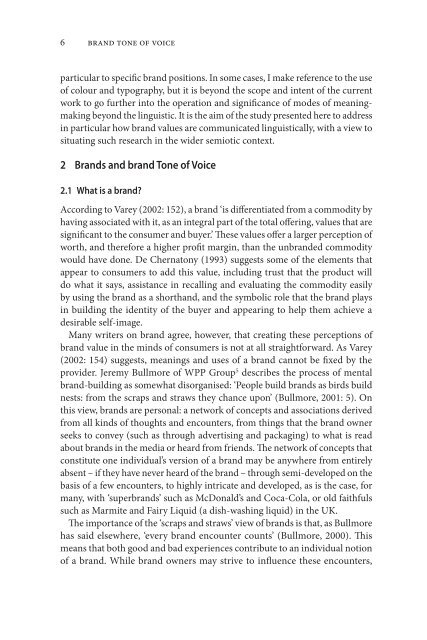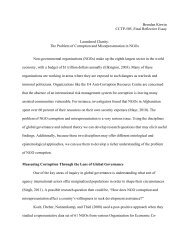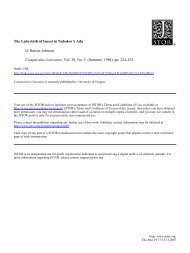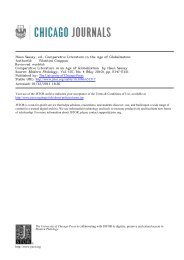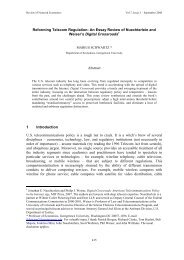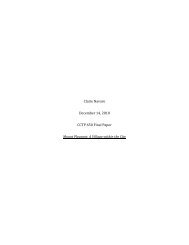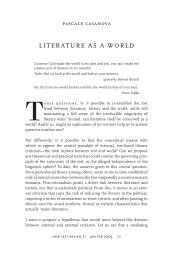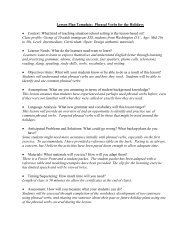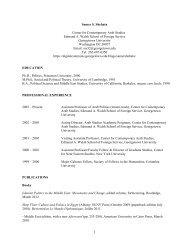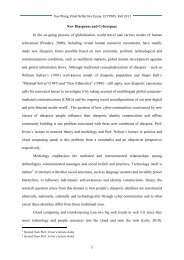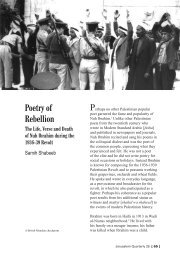Brand Tone of Voice:
Brand Tone of Voice:
Brand Tone of Voice:
- No tags were found...
You also want an ePaper? Increase the reach of your titles
YUMPU automatically turns print PDFs into web optimized ePapers that Google loves.
and tone <strong>of</strong> voiceparticular to specific brand positions. In some cases, I make reference to the use<strong>of</strong> colour and typography, but it is beyond the scope and intent <strong>of</strong> the currentwork to go further into the operation and significance <strong>of</strong> modes <strong>of</strong> meaningmakingbeyond the linguistic. It is the aim <strong>of</strong> the study presented here to addressin particular how brand values are communicated linguistically, with a view tosituating such research in the wider semiotic context.2 <strong>Brand</strong>s and brand <strong>Tone</strong> <strong>of</strong> <strong>Voice</strong>2.1 What is a brand?According to Varey (2002: 152), a brand ‘is differentiated from a commodity byhaving associated with it, as an integral part <strong>of</strong> the total <strong>of</strong>fering, values that aresignificant to the consumer and buyer.’ These values <strong>of</strong>fer a larger perception <strong>of</strong>worth, and therefore a higher pr<strong>of</strong>it margin, than the unbranded commoditywould have done. De Chernatony (1993) suggests some <strong>of</strong> the elements thatappear to consumers to add this value, including trust that the product willdo what it says, assistance in recalling and evaluating the commodity easilyby using the brand as a shorthand, and the symbolic role that the brand playsin building the identity <strong>of</strong> the buyer and appearing to help them achieve adesirable self-image.Many writers on brand agree, however, that creating these perceptions <strong>of</strong>brand value in the minds <strong>of</strong> consumers is not at all straightforward. As Varey(2002: 154) suggests, meanings and uses <strong>of</strong> a brand cannot be fixed by theprovider. Jeremy Bullmore <strong>of</strong> WPP Group 5 describes the process <strong>of</strong> mentalbrand-building as somewhat disorganised: ‘People build brands as birds buildnests: from the scraps and straws they chance upon’ (Bullmore, 2001: 5). Onthis view, brands are personal: a network <strong>of</strong> concepts and associations derivedfrom all kinds <strong>of</strong> thoughts and encounters, from things that the brand ownerseeks to convey (such as through advertising and packaging) to what is readabout brands in the media or heard from friends. The network <strong>of</strong> concepts thatconstitute one individual’s version <strong>of</strong> a brand may be anywhere from entirelyabsent – if they have never heard <strong>of</strong> the brand – through semi-developed on thebasis <strong>of</strong> a few encounters, to highly intricate and developed, as is the case, formany, with ‘superbrands’ such as McDonald’s and Coca-Cola, or old faithfulssuch as Marmite and Fairy Liquid (a dish-washing liquid) in the UK.The importance <strong>of</strong> the ‘scraps and straws’ view <strong>of</strong> brands is that, as Bullmorehas said elsewhere, ‘every brand encounter counts’ (Bullmore, 2000). Thismeans that both good and bad experiences contribute to an individual notion<strong>of</strong> a brand. While brand owners may strive to influence these encounters,


